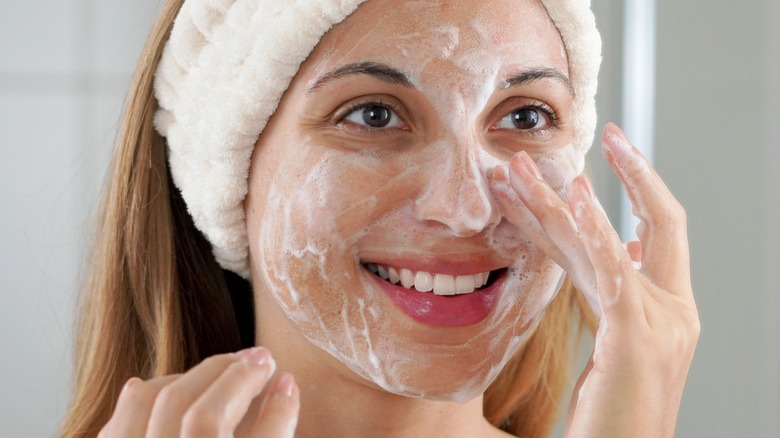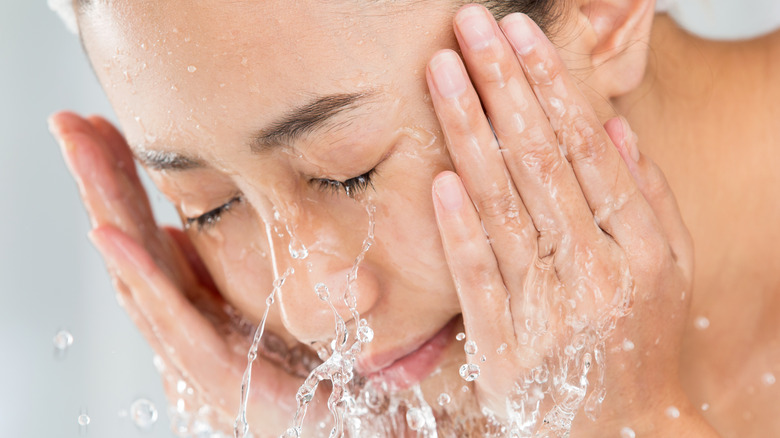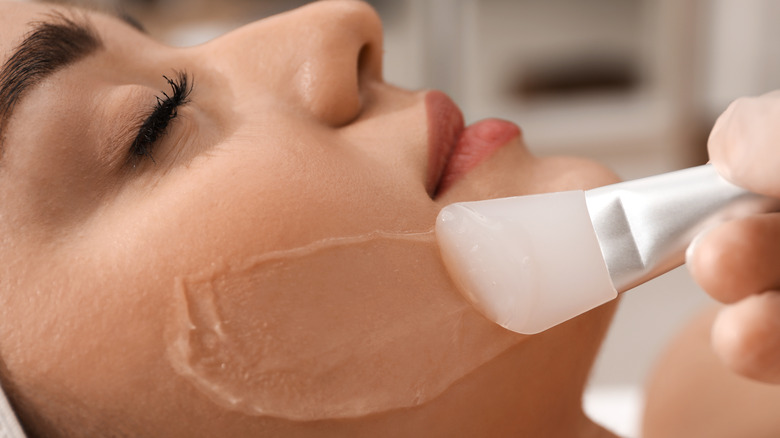Making The Case For Exfoliating Before You Cleanse Your Face
When it comes to facial cleanliness, washing alone is not enough. Cleansing your face with a cleanser can only help you remove dirt, excess oil, and makeup residue. It cannot slough away dead skin cells and stubborn gunk lurking inside your pores. "On a daily basis, our skin cells renew, and the cells that form the outer layers of our skin die as the new cells replace them. Exfoliating ensures that the dead cells are completely removed," consultant dermatologist Rachael Burns tells Byrdie. Removing dead cells regularly allows you to unclog your pores, preventing acne breakouts as well as keeping your skin smooth and radiant.
However, it's one thing to exfoliate the skin, it's another thing to do it right and reap full benefits from it. When it comes to exfoliating, most of us are concerned about the frequency, whether we're under-exfoliating or over-exfoliating skin, or whether we should exfoliate in the morning or at night. A lesser-addressed concern is where exfoliation stands in the correct order of a skincare routine. Actually, the order in which you apply your skincare products plays a critical role in determining the efficacy of your treatment. Many skincare enthusiasts think that cleansing the face of surface-level impurities first is better because it helps the exfoliating process go on smoother later on. But there are those who think otherwise. And in this article, we'd like to make the case for exfoliating before you cleanse your face. Here's why.
Why exfoliating should come before cleansing
According to celebrity dermatologist Dr. Harold Lancer, buffing away at the skin's surface before cleansing your face can help you start with a clean slate and reap better results.
"If you are thinking about the top layer of the skin, with all the pollution and debris, if you just use a cleanser first, the majority of that debris is not removed," Dr. Lancer explains (via Allure). When you exfoliate first, you are sloughing excess sebum, dead skin cells, and surface pollutants along with makeup residues away from your skin. Then, use a mild, non-abrasive cleanser to gently wash away leftover impurities and acne-causing off your face. In a sense, using an exfoliant before you cleanse your face is akin to giving your face a double cleansing, making it feel cleaner and smoother.
Once you're done washing your face, follow up with a moisturizer on damp skin to lock in hydration. Should you choose to scrub away the dead cells in the morning, take care to slather up with sunscreen to protect your vulnerable skin against UV damage. For those with healthy skin, avoid exfoliating more than three times per week, advises Heyday Skincare Educator Jeni Montoya.
Tips for exfoliating your face properly
Fundamentally, there are two types of exfoliation techniques — mechanical and chemical. Mechanical exfoliation usually involves a face scrub or cleansing brush to manually slough away dead skin cells. On the other hand, chemical exfoliation works by using acids — like a chemical peel — that chemically remove the outer layers of the skin and increase the cell turnover cycle. If your skin is not too delicate or sensitive, mechanical exfoliation is a good choice.
When it comes to mechanical exfoliation, dermatologist Dr. Avnee Shah (via Woman's Health) recommends using facial scrubs with the finest particles possible, as they are less abrasive on the skin. Sugar scrubs and rice enzyme powders are a great choice.
As far as chemical exfoliators go, clinically proven chemical exfoliants such as alpha hydroxy acids (AHAs) — or beta hydroxy acids (BHAs) — can help break down the gluey substance that binds the dead skin cells to the surface to reveal fresh new skin cells underneath. Retinoids, according to Dr. Shah, are also an exfoliant in and of themselves. "I find that if people are using retinoids, they don't really need to exfoliate on top of that," explains Dr. Shah.


